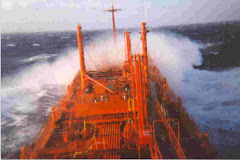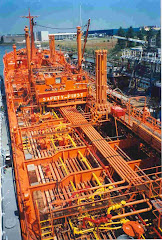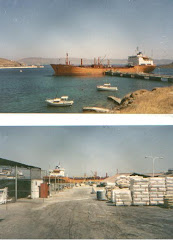|
Tuesday, July 29, 2014
End run for Berlian Laju Tankers bankruptcy and reorganization and challenges ahead
Tuesday, July 8, 2014
Waiting for September and the fall rebound in freight markets
We are now only a few months
away from the fall period and all eyes are on a confirmation of a widely
anticipated rate upturn in freight markets from September onwards. This will be a key litmus test driving market
sentiment. This has been fundamentally bullish since last year, where there
was surge of investment in shipping assets on expectations of a cyclical
upturn.
Expectations continue to be
bullish for next few years, when investors will be looking to liquidate their
positions in shipping assets with profit and move on. Likewise there are a number of high profile
deals based on new orders in bulk commodity vessel tonnage that will be coming
into the water from 2015 onwards. The case of Scorpio Bulk - a dry bulk play from Scorpio Tankers based on a very aggressive booking of dry cargo vessel orders without any owned drybulk tonnage in the water - is a prime example.
In
an unanticipated repeat of last year, freight markets opened this year with a whimper
instead of the much hoped for bang. There
was a premium in period fixture rates, but a downwards correction in spot dry
bulk and tanker bulk commodity shipping markets, creating an inverted earnings
curve between these two markets. It was
during these inopportune market conditions that Scorpio Bulk entered the market
to charter tonnage to build up an operating company in the dry bulk sector
until their massive new building orders are delivered.
There
are two basic issues that may challenge conventional wisdom in recent shipping
placements:
Meanwhile
sentiment in shipping markets is evolving. The latest monthly update from RS Platou takes
a more cautious near term demand growth in the dry bulk markets. Conversely, Plato is more optimistic on crude
tanker demand with growing potential of US crude oil exports, short term VLCC
demand from potential supply disruptions with the growing turmoil in Iraq and
improved Suezmax demand as European refiners return from maintenance.
Soon
the fall will be here and then the new year 2015. With the heavy concentration of long shipping
asset positions and new buildings orders coming on stream, it will be very interesting to see actual
investor returns and prevailing asset prices ahead.
Personally
I am skeptical of a repeat boom of the last decade. Demand growth in emerging markets seems to be
leveling off and there are not the same liquid credit markets anymore that
fuelled asset prices and facilitated sales transactions. There is still a lot
of shipyard capacity to turn out more vessels at marginal prices. Apart from cyclical volatility and the noise that it creates, earnings
margins in shipping companies continue to be under pressure. I am concerned that the upturn may be short and poor quality weaked by too much asset arbitraging and current fundamentals.
The old Wall Street
adage “Sell In May And Go Away” may possibly take on a new meaning, but then
again perhaps asset prices will continue to firm as per expectations.
|
Subscribe to:
Comments (Atom)








